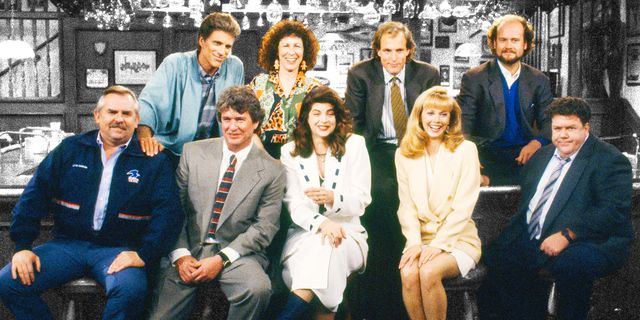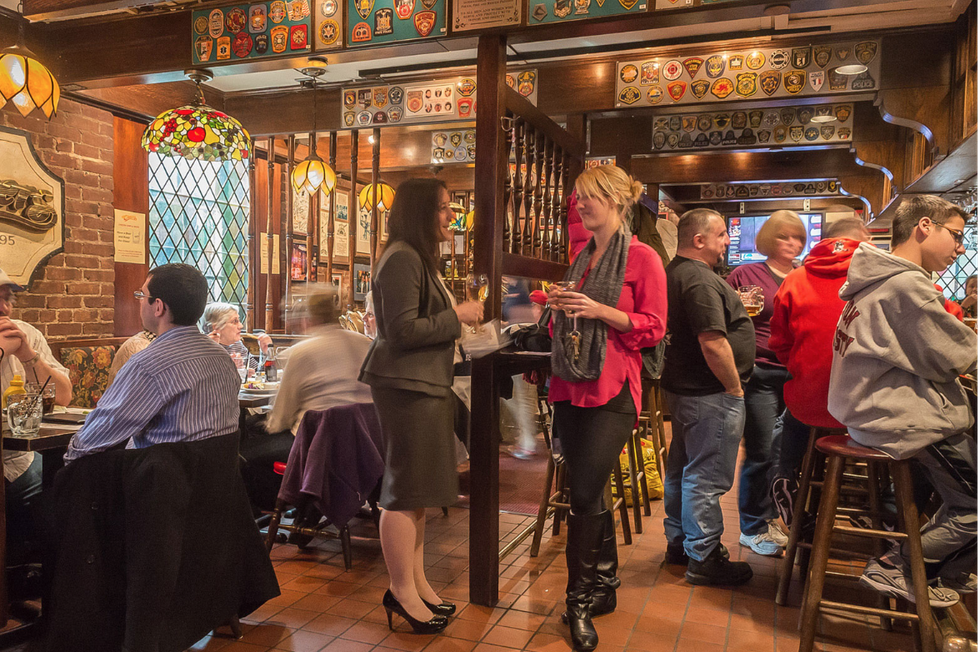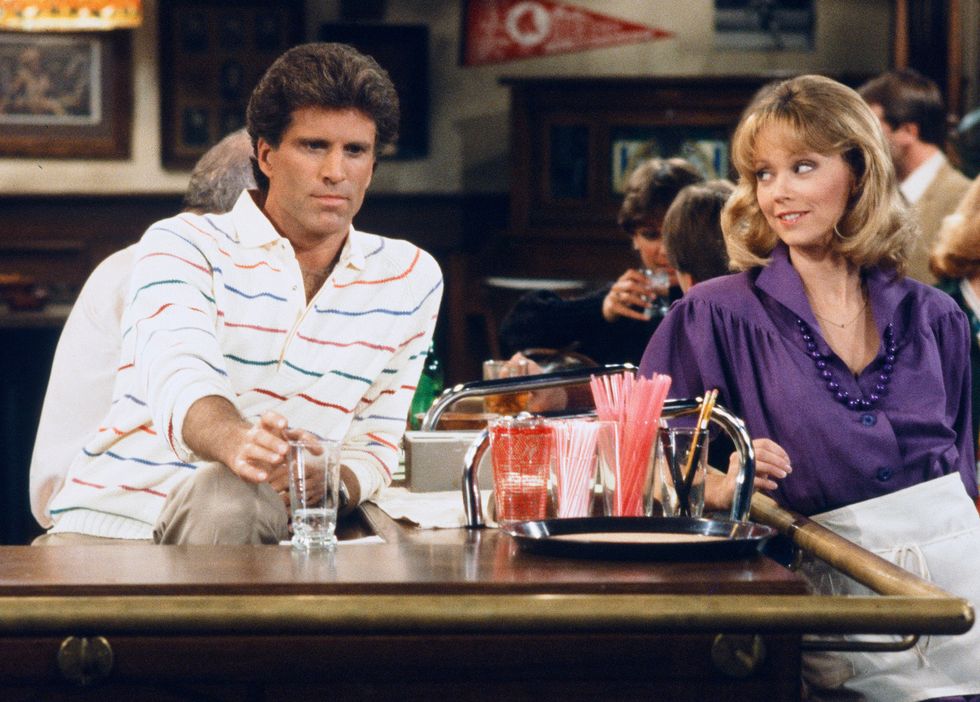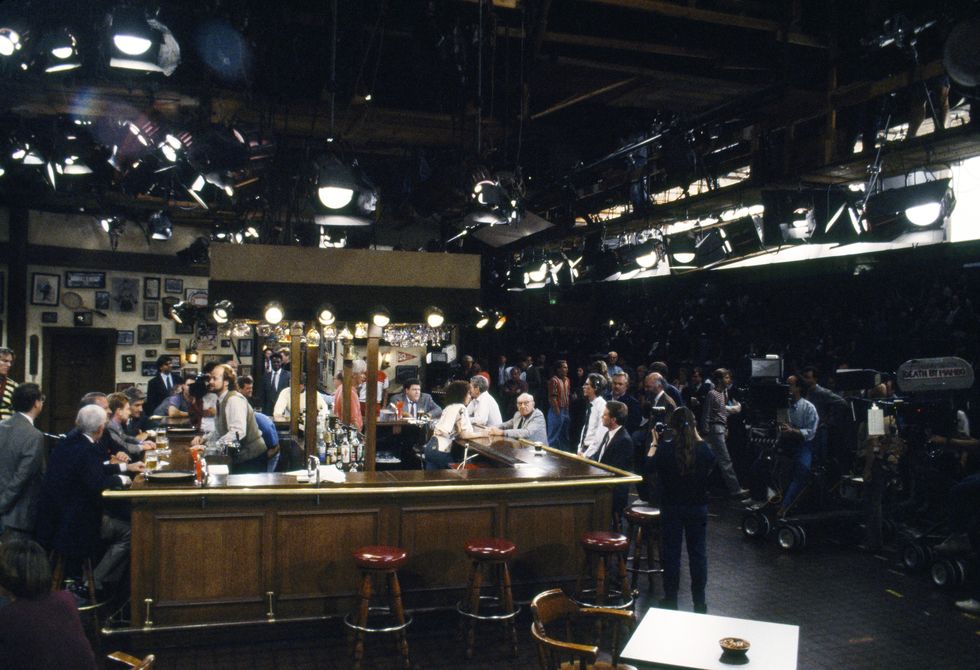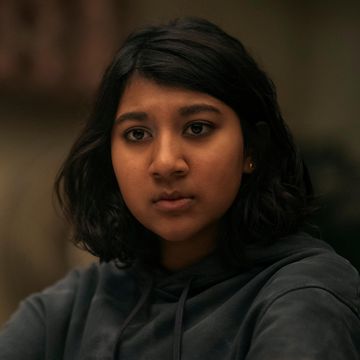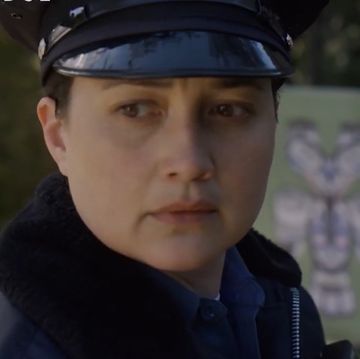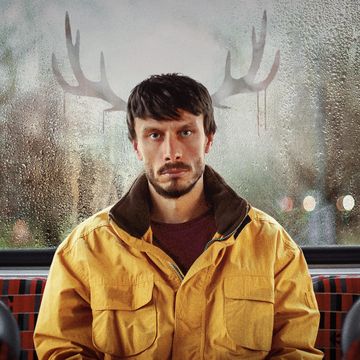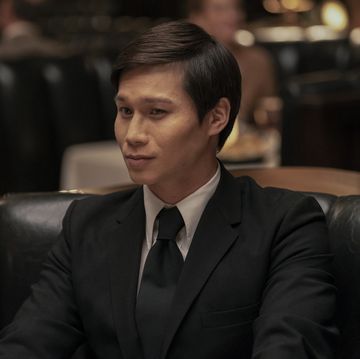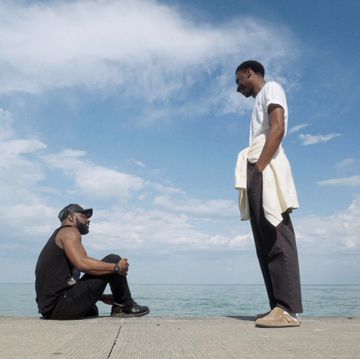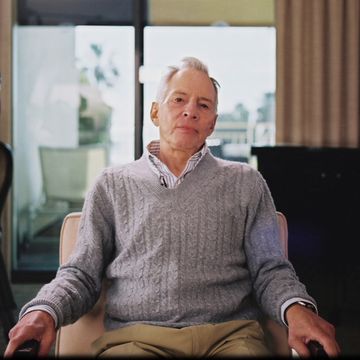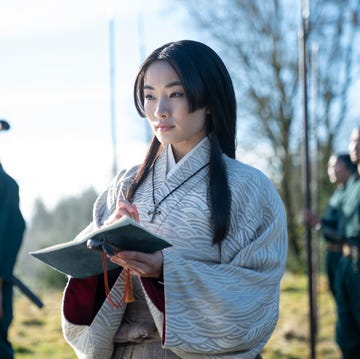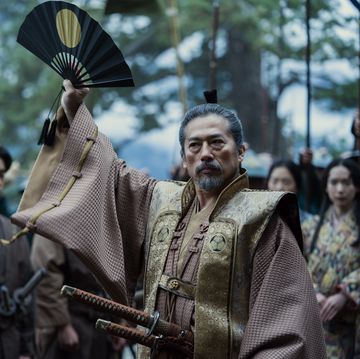On May 20, 1993, more than 40 million people watched the series finale of Cheers, the NBC sitcom about a popular Boston bar that first aired in 1982. Not only was the episode, titled “One for the Road,” the most-watched episode that season, it remains the second-highest-rated series finale of all time (just after M*A*S*H). And it's easy to see why: For eleven years, millions of Americans were obsessed with the wacky goings-on at this everyday watering hole, with its incredible cast of characters representing the everymen (and women) who tuned in each week.
For all its highs and lows, Cheers represents a pinnacle of American pop culture, culminating in a record-breaking finale that caught the attention of millions of viewers. Twenty-five years after its final episode, Cheers remains one of the great American sitcoms.
I realized a few years ago that Cheers was a massive blind spot in my pop-culture knowledge and began streaming hours of it every night. After all these years, the jokes felt fresh, the dialogue sharp and clever. I became invested in the rocky relationship between Sam Malone and Diane Chambers. I teared up over the death of actor Nicholas Colasanto almost 30 years after it happened. I would sometimes call my mom and talk to her about an episode as if she, too, had just watched it. (She has a surprisingly stellar memory about the specifics of Cheers.) And after a bad breakup, it was there for me. That may sound like I'm being dramatic, but that's because I was. Call it ridiculous, or call it self-care, but it felt particularly poignant at the time. The characters on Cheers were resilient (mostly) in the face of romantic woe, and that’s what I needed, too.
A few months after bingeing the series on Netflix, I was in Boston for a wedding—conveniently located in the same city Cheers took place. I’m not a religious person, but going to the Bull and Finch Pub—the bar used as the exterior for Cheers and the show's inspiration, which is now called Cheers Beacon Hill—was a spiritual pilgrimage. Cheers was a constant, a rock during an emotional time for me, and I felt like I needed to pay my respects.
I held my breath when the cab delivered my friend and me to 84 Beacon Street: That familiar building I had seen at the start of every episode of Cheers was suddenly right there in front of me. As we descended into the basement, I was struck at how much the bar did not look like Cheers. It’s a cramped little pub rather than the expansive set you see on TV. There are a couple of familiar touches: the brick walls flanked with Boston sports memorabilia, a few Tiffany-style stained glass lamps hanging from the ceiling. But the main room is separated by a wooden balustrade, splitting the area around the bar from the tables by the wall. It’s not the kind of space you can picture a frazzled, pretentious waitress having a lover’s quarrel with her bartender-boss; there’s not much space to pace the floor, shouting verbal jabs across the bar.
Still, I was at Cheers—or at least the place where Cheers began. We settled into a wooden booth, ordered our pretty basic drinks (a gin and tonic and a Bud Light; Cheers is as no-frills in real life as it is on the show), and laughed at the names of the dishes on the laminated menu. (Coach’s Club Sandwich, Carla’s Meatball Sub, Lillith’s Pan-Asian Salad. “Lillith would eat a pan-Asian salad at Cheers,” my friend said.) We traded sitcom-style banter at each other in the booth, imagining ourselves as guest stars on the show, certain that Carla would eventually come by, take our order, and possibly insult us as she darted off to complain about Diane. And while we took a beat after we landed every joke, there was no studio audience—or laugh track—to punctuate the zingers we lobbed at each other.
As silly as it was, I was enjoying all of it without irony; the things I loved about Cheers was celebrated with the utmost sincerity at this little bar. Even though the room was filled with strangers and nobody there knew my name, I was surrounded by a bunch of people who were also there because they loved Cheers as much as I did. I tried to play off my inherent love for the show and this place that celebrated it, taking on the hardened shell of the most cynical New Yorker who has an open disdain for a tourist attraction. (Sure, I posed for a picture next to a life-sized cut out of Norm before we left. Why this place is not on the Freedom Trail, I’ll never know.)
But being there was a reminder that TV is ultimately important; it’s one thing that can unite us all when we’re at our most divided, and the best TV show can appeal to everyone subtly enough that the audience might not actually realize how much they have in common with the others who watch it. Many years later, after all, we are still thinking about Cheers because it's still so present in the TV we consume today—and because it's nice to think about the distant past, relatively less fraught than our present, and ignore the problems of the world that didn't seep into the entertainment we enjoyed.
Millions of people make a similar journey every year. Maybe they go to Cheers because, like me, they’re obsessed with the show, or maybe they go because it’s simply a fun stop to make on the Boston tourist rounds. Hell, you don’t even have to be in Boston to go to Cheers; they’re all over the world in airports (and there’s another standalone location in London). Most people probably go to a Cheers simply because it’s there. It’s fitting, honestly, as Cheers as a show is essentially television comfort food. It’s the kind of show you take for granted because of its familiarity, but one shouldn’t overlook the quality of its ingredients simply because they know how it’ll taste.
It’s that very familiarity that makes the show so brilliant: Cheers became iconic, a touchstone of American pop culture, slyly influencing the way we consume entertainment since its beginning—without our even noticing it. Its influence on television is almost unavoidable. It was the first sitcom to feature a serial storyline, with the romance between Sam and Diane capturing the attention of an audience who cheered for them (and rooted against them). Without those two bickering and fighting and falling in and out of love, we wouldn’t have the similarly frustrating Ross and Rachel on Friends or, for that matter, the platonic version of that mismatched couple in Liz Lemon and Jack Donaghy on 30 Rock.
Cheers also managed to be an amalgamation of a workplace comedy and a family sitcom; its characters all interacted together like relatives, yet they weren’t, which allowed for them to intermingle in ways that heightened their dependency on each other. Why did Diane stay at Cheers so long? Why couldn’t Frasier, Norm, or Cliff find another place to drink? Maybe Carla could have found another line of work. None of this happened—not just for the sake of the show, but because they all genuinely liked being around each other despite whatever interpersonal conflicts they had.
And that sentiment is exactly why Cheers was a hit with audiences—and remains so beloved today. We all have those people in our lives; they’re not exactly our family, or the friends we’ve sought out. Instead, they’re the people we encounter every day, the folks who may drive us bonkers or up the wall, the random people to whom we find ourselves attracted despite our best intentions or simply have to be around. Either way: We can’t escape them, so we might as well enjoy our time together.
What Cheers takes deeper is how these are often people with whom we have nothing in common—at least on the surface anyway. Just like in real life, the characters on Cheers had to find common ground with one another (beyond, of course, the location they shared as either a workplace or a friendly meeting spot). Carla and Norm might have never known each other had it not been for the bar; the same goes for Woody and Frasier, or Rebecca and Cliff. Cheers was a unifier for these characters, just as it was a unifier for countless fans.
But beyond what Cheers said about America, the show also changed TV forever. It was part of a blockbuster lineup of Thursday-night TV, an era that predated the Must See TV age that saw NBC dominating the television landscape. Cheers itself was a bridge between the ’70s workplace and family-centered sitcoms, combining that into a single concept and initiating the serial narrative into the sitcom genre. And while Cheers was a multi-camera sitcom filmed before a studio audience, the show was shot in a distinctly cinematic style that would influence the single camera sitcoms of the new millennium like The Office, 30 Rock, Parks and Recreation—three workplace comedies in which the characters also interacted like dysfunctional families.
You couldn’t avoid Cheers when it was on, and you can barely avoid it three decades later; it permeated the culture at large, still hanging over us as an influence on the entertainment we consume and appreciate today. Cheers, after all, is what all of us strive for: a regular haunt, filled with friends and lovers who are glad to see us, that will always be there waiting for us when we make our return—and yes, where everyone knows your name.
